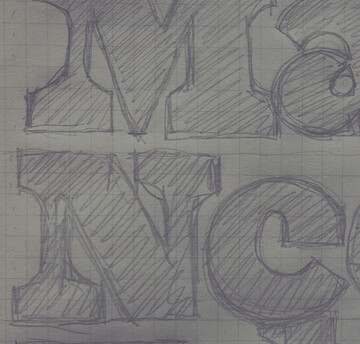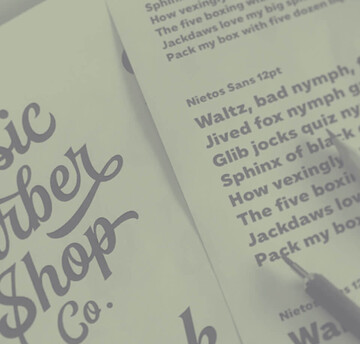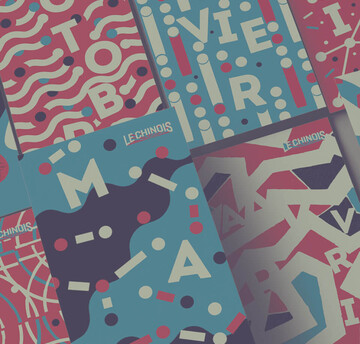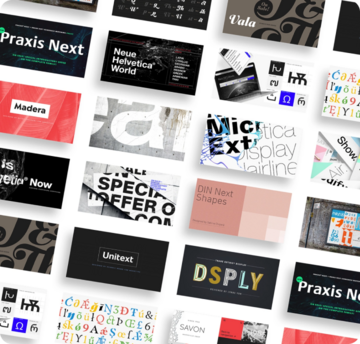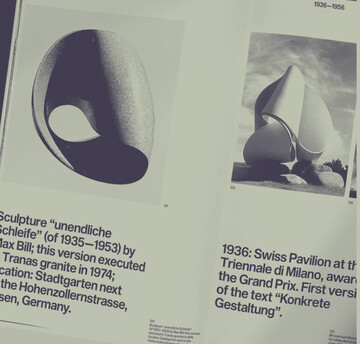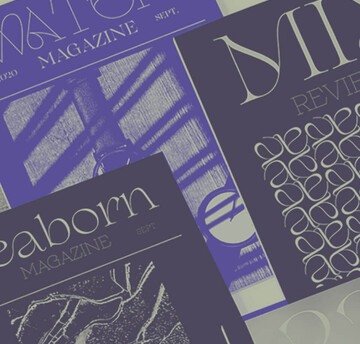Font licensing principles unpacked.

What is the difference between a typeface, a font, a font file, a font license, and a EULA? Does a font license cover one or multiple fonts? What informs a font license strategy? What’s the easiest way to resolve a font license gap—before or after it arises? From fundamental principles to pre-purchase considerations, this guide aims to help you confidently speak the language of fonts.
“Tip: You’ll want to bookmark this.”
Although often overlooked, font licenses are legally and ethically important. Legally, font designs and software are entitled to intellectual property (IP) protection (yes, even if they are free), and ethically, it is wrong to take advantage of creative property without the owner’s permission. Doing so robs the creator of compensation for their hard work and causes a dangerous ripple effect that discourages future creations.
Did you know? Although digital font files take mere seconds to download and deploy, the typographic designs take months to years to create.
Key terminology
Licensing a font can feel like a daunting task that requires a background in type design and legal training, but it is a lot more straightforward with a grasp of these seven terms:
| Term | Meaning | Example |
| Typeface | A typeface is what you see, the primary design, starting as carefully drawn artworks consisting of a collection of letters and symbols. | e.g. Futura Now |
| Font | A font is what you use, a certain style of the typeface and format. | e.g. Futura Now Condensed Bold point-16 as a metal block for printing presses or as a digital file for websites or packaging. |
| Font File | A font file is a piece of software required to upload a font onto a device, each font file requires an appropriate font license. | e.g. A font file for Future Now Text Regular that is compatible with cloud-servers |
| Font License | A font license gives you permission to use a specific font, a selection of fonts or an entire typeface under specified terms as laid out in the license agreement. | e.g. A font license to use the Future Now Text Regular font file for non-commercial purposes (e.g. prototyping) on up to five desktops over one year. |
| End User License Agreement (EULA) | An End-User License Agreement (EULA) is a license for any piece of software, including fonts. In that case, a EULA is often called a Font License Agreement (Font ULA or EULA) and gives the holder permission to use a specific font or a selection of them. | e.g. A font EULA grants a gaming company (licensee) the right to deploy a digital file of Future Now Text Regular (software) owned by the font provider (licensor) under certain EULA terms, such as allowing gamers (end user) to read desired text with Futura Now Text Regular typeface but to not manipulate the digital file in the text. |
Key considerations in a font license strategy
Knowing why and how fonts are protected by font licenses granted under font EULAs can make the first stages of planning a font licensing strategy a breeze. In our experience, asking the following five questions really gets the rolling on a font license strategy for most brands:
Where might the font files be installed i.e., where will the fonts live?
- Computer desktops
- Websites
- Mobile
- Applications
- Digital Advertisements
- Cloud servers
- Some or all of the above?
Who needs access to the font files?
- Employees working within your organization.
- Non-employees working alongside your organizations.
How will the font files be used?
- Full use: access, modification, deployment (from prototype to production).
- Limited use: such as anything but deployment (e.g., prototyping).
- Specified use: e.g., deployment only (e.g., for a print-on-demand company).
To what end might the software be used?
- Commercially: for business purposes (e.g., marketing, advertising).
- Potentially commercial: for possible business (e.g., pitches).
- Non-commercially: internal communications (e.g., marketing guide).
Does our existing font licensing situation need updating?
- Are some licenses too restrictive?
- Are some licenses expired or missing?
- Are some fonts not valid, corrupted, or not compatible with certain platforms?
- Are custom fonts desired for a rebrand?
- Possibly some or all of the above… no one knows.
When you layer your organization’s particular needs on top of these fundamental considerations, a licensing strategy begins to take shape. A desire to expand the current use of fonts to more desktops and/or more channels might inspire an upgrade to existing licenses. Expired and/or missing font licenses for font files already in use could trigger a comprehensive overhaul or even a custom agreement through a conversation with the font provider.
To establish the big-picture goals, it is useful to first check your font license status by referring to relevant EULAs, then assessing alternative options before making the changes you want to see in your font license plan.
Font Licensing Choices
Once you have a plan in sight, finding the right process often includes making decisions on the following font licensing options:
Investing in fonts or relying on free fonts.
- Exclusive use of a custom fonts or non-exclusive use of existing fonts
- Font subscription or one-off purchases
- All-in-one font process solution or multiple EULAs from multiple font providers
- Existing plans or custom agreements
As for us at Monotype, our font licensing plans are all about helping organizations, big or small, find the right font license agreements for their needs while protecting our beloved typographers and their creative spirit!
